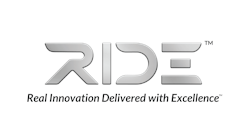Pure electric buses are being sought by many transit agencies in the U.S. and Canada as an alternative fuel to green fleets and lower costs, but given it’s an emerging technology some are hesitant to get on board.
So when Proterra unveiled its new bus at the American Public Transportation Association Bus & Paratransit show May 5, it didn’t just mean a significant step for the company, but also the future of electric buses as a whole given the technology is now moving into second generation development.
“We’re very excited,” said Garrett Mikita, president of Proterra. “There’s a lot of new technology with a great cost curve, with more volume, more room and a lower price.”
For the V2, Proterra has made its bus 6 feet longer and 2,000 pounds lighter than its first generation bus by using a composite body and getting rid of stainless steel plates protecting the batteries underneath the unit with composite panels with an additional layer of Kevlar to make it more puncture resistant. And inside the bus, thermal formed plastics are being used to increase the tolerance of the bus.
Proterra is using Toshiba batteries in the V2, which have a projected lifespan of six years, so only one replacement is needed during the life of the bus.
It’s also using conductive fast charging to allow a bus to go from a five percent charge to 95 percent charge in less than 10 minutes. Using the technology, the company ran the bus 710 miles in a 24 hour period while getting the equivalent of 27 miles per gallon.
“When you look at the volatility of the markets, electric is the most stable,” said Joseph Lambert, director of quality for Proterra. “Electricity prices are far more stable than direct fuels, such as petroleum or natural gas.”
Proterra wasn’t the only one showing off new technology in the electric bus market, with BYD showing off its bus made at the Lancaster, Calf., plant and Complete Coach Works was showing off its Zeps Bus, which has a WAVE inductive plate installed to allow for inductive charging of the bus.
Wesley Smith, chief development officer for WAVE, said the plate allows for a bus to be recharged without the operator having to plug it in. The operator can park over a unit in the ground and the bus will recharge.
He said the units even handle the abuse of harsh winter weather, so it’s not a technology limited to warm weather states.
During the opening session of the conference, President Michael Melaniphy mentioned the amount of alternative fueled buses ballooned from a handful 20 years ago to 40 percent, showing transit’s commitment to green technology. And with the boom in pure electric drive technology, it shows this fuel source is likely to play a big role in greening agency fleets for the next 20 years.

Joe Petrie | Associate Editor
I came to Mass Transit in 2013 after spending seven years on the daily newsbeat in southeastern Wisconsin.
Based in Milwaukee, I worked as a daily newspaper reporter with the Waukesha Freeman from 2006-2011, where I covered education, county and state government. I went on to cover courts for Patch.com, where I was the main courts reporter in the Metro Milwaukee cluster of websites.
I’ve won multiple awards during the course of my career and have covered some of the biggest political events in the past decade and have appeared on national programs.
Having covered local government and social issues, I discovered the importance of transit and the impact it can have on communities when implemented, supported and funded.





